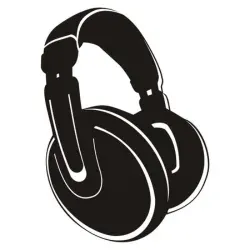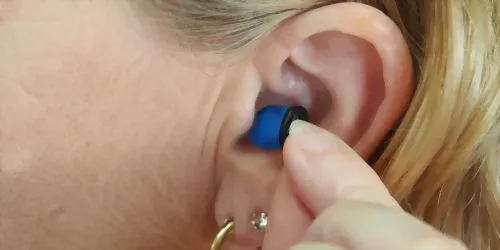Hearing loss is a significant health concern that affects millions of people worldwide. It's crucial to understand what decibel (dB) levels can be harmful to our ears to prevent hearing damage. This article will delve into the specifics of sound intensity, explore the dB levels that pose a risk to our hearing, and provide practical advice on protecting our ears from excessive noise.
Key Takeaways:
- Prolonged exposure to noise levels above 85 dB can cause hearing damage.
- The risk of hearing loss increases with the duration and intensity of noise exposure.
- Protective measures, such as using earplugs or earmuffs, can help prevent noise-induced hearing loss.

The Science of Sound and Hearing
Sound is measured in decibels (dB), which is a logarithmic unit that quantifies the intensity of sound pressure. Our ears are sensitive instruments capable of detecting a wide range of sounds, from the softest whisper to the roar of a jet engine. However, there is a threshold at which sound becomes harmful to our hearing.

The human ear can typically hear sounds ranging from 0 dB, which is the threshold of hearing, to about 120 dB, the threshold of pain. However, just because we can hear a sound without pain doesn't mean it's safe. Prolonged exposure to sounds at or above 85 dB can lead to permanent hearing damage.
When Noise Becomes Harmful
What dB is bad for ears? The general consensus among audiologists and health organizations is that regular exposure to noise levels above 85 dB can cause hearing loss over time. For context, normal conversation typically occurs at around 60 dB, while a lawnmower might operate at about 90 dB. It's not just the intensity of the noise but also the duration of exposure that contributes to the risk of hearing damage.
For example, exposure to noise at 85 dB for eight hours a day is considered the maximum safe exposure level. As the dB level increases, the safe exposure time decreases dramatically. At 100 dB, which is typical for a handheld drill, safe exposure time drops to just 15 minutes.
Everyday Sounds and Their Decibel Levels
To better understand what dB levels are bad for ears, it's helpful to have a reference for common sounds and their associated decibel levels. Here are a few examples:
- Whisper: 30 dB
- Refrigerator hum: 40 dB
- Normal conversation: 60 dB
- Busy street traffic: 70-85 dB
- Lawnmower: 90 dB
- Rock concert: 110-120 dB
- Sirens: 120 dB
- Fireworks: 140-160 dB
It's clear from this list that many everyday activities can expose us to potentially harmful noise levels.

The Role of Duration in Noise Exposure
The duration of exposure to loud noise is just as critical as the intensity. Noise-induced hearing loss is a result of both the power of the sound and the length of time you're exposed to it. The Occupational Safety and Health Administration (OSHA) has set legal limits on noise exposure in the workplace, which are based on a worker's time-weighted average over an 8-hour day.
As the dB level increases, the amount of time that it's safe to be exposed to that noise decreases. This is known as the exchange rate, and OSHA sets this at 5 dB, meaning for every 5 dB increase in volume, the safe exposure time is cut in half.
Protecting Your Ears from Harmful Decibels
Preventing noise-induced hearing loss is all about taking proactive steps to protect your ears. When you know you'll be exposed to noise levels above 85 dB, it's essential to use hearing protection. Earplugs and earmuffs are effective at reducing noise exposure and are widely available.
It's also important to be mindful of the volume settings on personal audio devices. Many smartphones and music players can produce sound at levels that can cause hearing damage if listened to at maximum volume for extended periods.
Recognizing the Signs of Hearing Damage
Early detection of hearing loss can help prevent further damage. Signs of hearing damage include ringing in the ears (tinnitus), difficulty understanding speech in noisy environments, and a feeling of fullness or pressure in the ears after noise exposure. If you experience any of these symptoms, it's important to consult with a healthcare professional or audiologist.
Regular hearing tests can also help monitor your hearing health, especially if you're frequently exposed to high noise levels in your environment or occupation.

Summary
Noise-induced hearing loss is a preventable condition that results from exposure to harmful decibel levels. Understanding what dB is bad for ears is crucial in taking the necessary precautions to protect your hearing. Remember that sounds above 85 dB can be dangerous, and the risk increases with the intensity and duration of exposure. By being aware of the noise levels in your environment and using proper hearing protection, you can help preserve your hearing health for years to come.

FAQ Section
At what dB level does hearing damage occur?
Hearing damage can occur at noise levels above 85 dB with prolonged exposure. The risk of hearing loss increases as the decibel level rises.
How long can I be exposed to 90 dB noise without risking hearing damage?
According to OSHA, exposure to 90 dB should be limited to 8 hours per day. However, it's always best to minimize exposure time and use hearing protection when possible.
What are some effective ways to protect my ears from loud noises?
Using earplugs or earmuffs can significantly reduce your risk of hearing damage from loud noises. Additionally, limiting the volume on personal audio devices and taking breaks from noisy environments can help protect your hearing.
Related articles:











